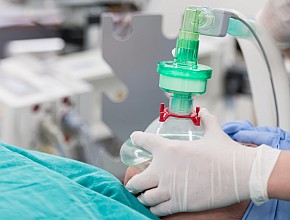Pneumococcal vaccines and pneumonia prevention in COPD
This Cochrane publication summarizes the effects of polyvalent pneumococcal vaccine in patients with chronic obstructive pulmonary disease (COPD) and provides support for the use of such a vaccine in this population.
Pneumococcal pneumonia may be caused by one of the many (>80) serotypes of Streptococcus pneumonia. Fourteen-valent and, more recently, 23-valent pneumococcal polysaccharide vaccines (PPVs) have been used to prevent this disease in vulnerable populations, including those with COPD.
This summary analysis reviewed data from 12 randomized controlled trials including 2,171 patients, with about half receiving the older, 14-serotype PPV (or placebo) and half the newer, 23-serotype PPV (or placebo). Most participants were males, with a mean age of 66 years and mean forced expiratory volume in one second (FEV1) of 1.2 L (slightly over 50% predicted). The observation period ranged from 6 to 36 months and was generally 2 to 3 years in larger studies.
Vaccination was associated with a lower probability of developing any-cause community-acquired pneumonia (about 9.4% vs 14.3%; odds ratio [OR], 0.62; 95% confidence interval [CI], 0.43 to 0.89). The number of patients to be vaccinated to benefit one (NNT) was 21. Documented pneumococcal infection was infrequent and thus the results were not precise (OR, 0.26; 95% CI, 0.05 to 1.31). Vaccinated people had also a lower probability of a COPD exacerbation (48% vs 61%; OR, 0.60; 95% CI, 0.39 to 0.93); the NNT to prevent one episode of exacerbation was 8 (95% CI, 5 to 58).
There was no documented difference in terms of all-cause mortality, cardiorespiratory mortality, or hospital admission for any cause. There was no sufficient data to compare differences between vaccine types.
The authors consider these effects as supporting the efficacy of vaccination.
Duration of DAPT after DES placement
Dual antiplatelet therapy (DAPT) following drug-eluting stent (DES) insertion for coronary artery disease (CAD) has an overall protective effect against cardiac events but carries an increased risk of bleeding. In this summary analysis of individual patient data, the authors quantify the size of these effects.
The analysis included over 10,000 patients. Approximately half of the patients were treated during the course of acute coronary syndrome (ACS), most of whom had marker-negative unstable angina, and the other half had stable CAD. Comparing the use of DAPT for up to 6 months versus up to a year, the frequency of some coronary events was higher in the shorter-term group but only among patients with ACS: for myocardial infarction and stent thrombosis, 2.43% versus 1.67% (borderline statistical significance), with 1.67% versus 1.79% among patients with more stable disease. In an additional analysis using different DAPT durations among ACS patients, the difference was mostly due to the studies using 3-month-long combined therapy versus 12-month-long and was not evident while comparing therapy lasting 6 versus 12 months. Among patients with stable CAD, the duration of DAPT did not influence the risk of myocardial infarction or stent thrombosis.
The frequency of major bleeding, although low, was doubled among patients receiving 12-month-long treatment (0.78% vs 0.39% with shorter treatment).
The authors interpret the results as evidence that the duration of DAPT may well depend on the clinical presentation, with as few as 3 months possibly sufficient among patients with stable CAD treated with DESs.
Early intubation after in-hospital cardiac arrest: surprising effects on survival
Angus DC. Whether to Intubate During Cardiopulmonary Resuscitation: Conventional Wisdom vs Big Data. JAMA. 2017 Feb 7;317(5):477-478. doi: 10.1001/jama.2016.20626. PubMed PMID: 28118658.
In this cohort study examining patients with in-hospital cardiac arrest, the authors have made a surprising observation on the potentially deleterious effects of early intubation.
Previously done observational studies noted the possible lack of benefits of early intubation, which has led to this large-scale observational cohort study, conducted between 2001 and 2014. The recorded data allowed, among others, to compare patients intubated at any given minute after in-hospital cardiac arrest within the first 15 minutes with patients not yet intubated during that time. The comparison took into account a number of characteristics of the patients, hospitals, and cardiac arrest itself (matching).
The study included over 40,000 patients intubated within the first 15 minutes of cardiac arrest. In comparison to patients at risk of intubation (ie, not yet intubated at the same minute), the outcome in intubated patients appeared to be worse: survival to hospital discharge was 16.3% versus 19.4%; return of spontaneous circulation, 57.8% versus 59.3%; and good functional outcome, 10.6% versus 13.6%.
Although the authors point to the potentially suboptimal matching, this study provides additional support for favoring uninterrupted chest compressions during cardiac arrest, even at the expense of delayed intubation.
 English
English
 Español
Español
 українська
українська



